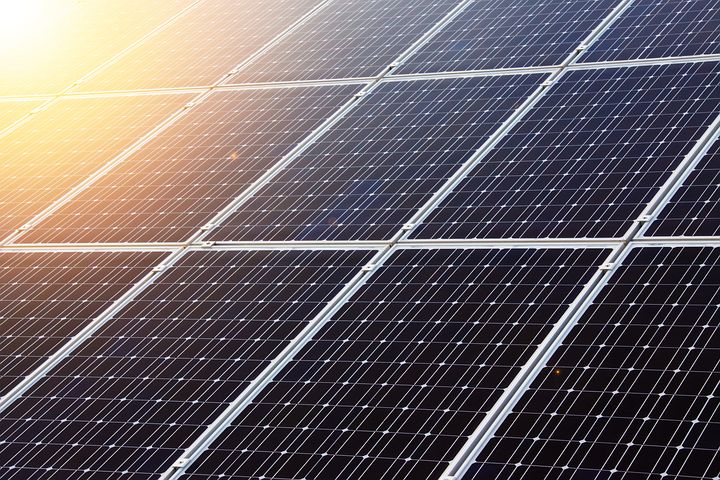In this article, we will explore the concept of sustainability from an urban level in Las Vegas; specifically, we’ll be examining the energy consumption habits of casino hotels, local waste processes, and municipal recycling initiatives.
Nevada uses more electricity than any other jurisdiction in the United States. In 2014, Nevada used a collective total of 114 billion kilowatt hours; that’s enough energy to power an estimated 1.3 million homes throughout the fifty states. The state also consumes more natural gas and water than any other in the nation. In particular, Las Vegas is home to some of the world’s largest casinos and entertainment venues; large-scale operations require tremendous energy. However, Las Vegas government website touts that they are the first large city to be run on 100% renewable energy. How is this possible? Thanks to the enormous amount of energy generated by solar power from the Nevada desert sun. The Hoover Dam supplies energy derived from hydropower.
Las Vegas casinos have come a long way from their early days. The Nevada Test Site, where the US government detonated over 700 atomic bombs in the 1950s, was just a few miles away from Las Vegas. When nuclear testing began in the desert, exposure to harmful radioactive contamination was common among employees and their families who lived in the city. Consequently, such activity caused many people to leave Las Vegas or miss out on employment opportunities at the bomb site. Today, Vegas is home to more than 35 million visitors each year, with an economic impact of over $100 billion as of 2014; hence it’s no surprise that these casinos are energy-intensive (International Gaming Institute, 2015).
Energy Consumption at Casinos
Most casino hotels are designed to allow sunlight in as much as possible. The casino floors themselves have little natural light. There is a theory that suggests it’s to encourage players to be confused about the passage of time. However, direct sunlight would also cause glare on the game terminals. There is much research into ambient lighting and music to encourage gambling pace and comfort.
However, we are talking about huge glass buildings in the middle of the Nevada desert. Large glass windows create problems of their own: when a building is constructed using such materials, it allows the heat inside to radiate into the night sky instead of staying trapped inside. Consequently, many casinos use air conditioning systems that work at maximum capacity year-round; it’s estimated that each slot machine uses 1,500 KW/hour per year (CityLab). As a result, casinos in Las Vegas use as much electricity as many small towns do due to the inefficiency of their air conditioning systems.
Las Vegas Waste Management
Although huge casinos consume significant amounts of energy and produce a large amount of waste, they also play an important role in the city’s waste management. When a casino is built, the entire region where it’s located must be developed around it to accommodate the influx of visitors and employees. In some cases, this amounts to filling entire cities with hotels and making them into job hubs for highly paid workers. In 2010, the economy was so strong in Las Vegas that the unemployment rate for Clark County (where the city of Las Vegas is located) was 8.7 percent—the lowest point it had been in over a decade.
While casinos have played a significant role in improving Las Vegas’s infrastructure and helping boost employment levels in recent years, social and environmental costs are associated with having them around. For example, casino workers are often subjected to long hours without breaks and inhospitable working conditions. Many such employees live paycheck to paycheck and rely on welfare programs yearly due to their low wages. On the other hand, the construction of many casinos has caused significant damage to wildlife habitats. For example, Lake Mead is home to native species of fish, such as trout and arroyo chub, which are now endangered due to the introduction of carp through a series of feeder streams built to bring water from Lake Mead up into the desert (Muleys). The muleys have been increasing since being introduced and have gradually shrunk the habitat for other species.
Las Vegas Recycling
Recycling is one way Las Vegas can become more sustainable; it also preserves valuable natural resources and contributes to a cleaner environment. Such efforts have already resulted in much-needed waste reduction. Last year, Las Vegas managed to recycle over 1.6 million pounds of waste per day (Las Vegas Review-Journal). In turn reducing solid waste by 17 percent since 2008. Much of this waste is what’s left after many restaurants and hotels throw their scraps away, but 7 percent is recyclable items such as aluminium, plastic bottles, and paper mixed with glass.
In some parts of Las Vegas, the level of recycling is extremely high; for example, one organization reduced its recycling rate from 85 percent to 95 percent in just two years (Palmer et al., 2010). The city also has many facilities where people can donate old items for pick-up. All these facilities collect over 6.4 million pounds of donated items each year (Palmer et al.). In addition, the city has programs to educate residents about sustainable living. These programs are designed to show locals ways they can reduce their consumption levels.
The city’s efforts to reduce its solid waste have attracted many companies looking to build manufacturing facilities in the area. Many of these projects are currently focused on building eco-friendly greenhouses. Also metal factories that recycle discarded products such as electric wire.
You may also notice grass and flower beds in public spaces have been replaced with artwork and desert native plants. This has conserved millions of gallons of water every year. (https://www.lasvegasnevada.gov/News/Blog/Detail/a-sustainable-future-in-the-desert)
Conclusion
Las Vegas is not a perfect example of a sustainable city; it has many problems, such as water shortages, poverty, and unemployment. However, the city has made great strides toward becoming more sustainable in recent years. For example, casinos have helped boost employment levels in the area. At the same time contributing to the local economy through construction projects and buying local goods and services. On the other hand, recycling waste has also helped mitigate pollution issues associated with toxic waste dumps. Still, hundreds of thousands of gallons of water are used daily to support the gambling industry. We look forward to seeing how Las Vegas continues to improve and grow in a sustainable way.

